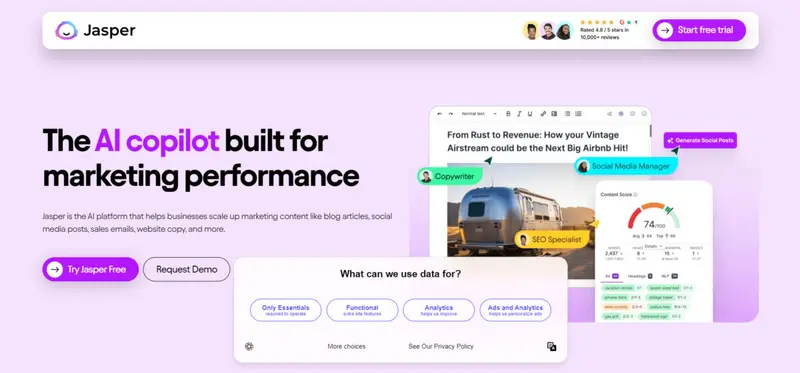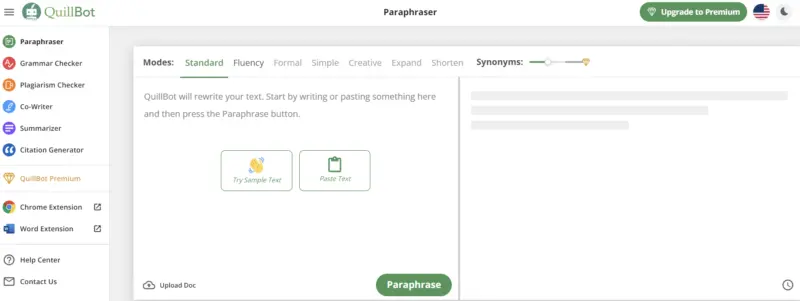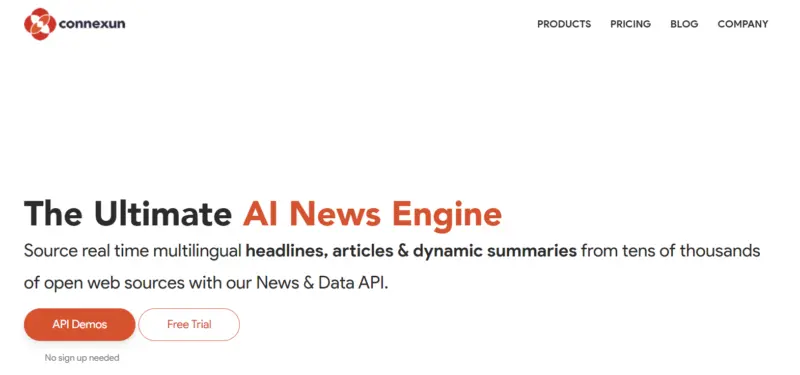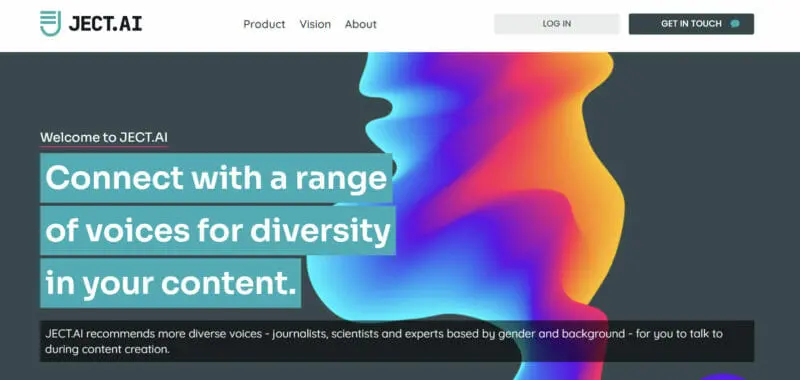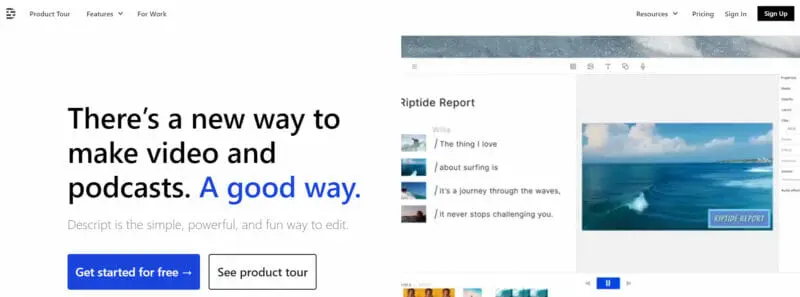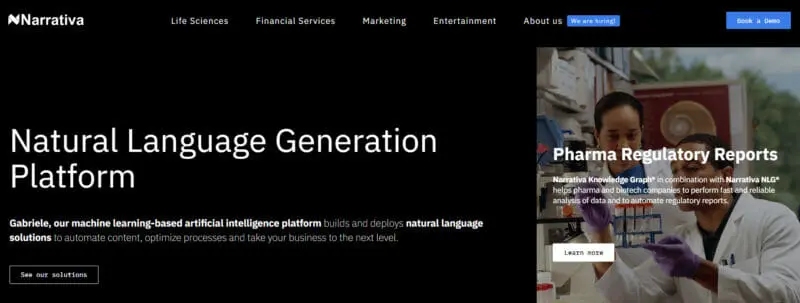Enter AI tools for journalists—a game-changing development that’s transforming newsrooms worldwide. These cutting-edge technologies offer journalists innovative solutions to streamline their workflows, enhance accuracy, and uncover stories hidden within vast amounts of data. From writing and fact-checking to data analysis and content generation, AI tools are reshaping the future of journalism.
The use of AI tools for journalists can be viewed as a further support tool. These enable you to quickly access new information, automate repetitive tasks, uncover emerging trends, and analyze large volumes of data, among other capabilities. Find out which tools you can use to streamline how you write the news.
Top 10 AI Tools for Journalists to Boost Writing Speed and Quality:
Jasper AI (formerly Jarvis) is a powerful and versatile AI Content Generator to help streamline your workflows. With Jasper, you can generate social media content, advertising copy, emails, and SEO-optimized articles up to 10 times faster. Furthermore, it lets you write—and read—content in as many as 25 languages, including English, Japanese, and Spanish. Jasper is loaded with features that will help journalists write more efficiently. Some of the noteworthy picks include Creative Story, which assists you in writing creative stories. Content Improver, a feature that optimizes your content to make it more engaging and Engaging Questions, a feature that lets you ask clever questions to your audience to drive engagement. Despite its wealth of features, Pattern Recognition is one of this AI writing tool’s best features. Jasper identifies your writing pattern to generate content that has a similar writing style to yours. Plus, it’s trained on an expansive array of data points. It browses the entire web, ensuring that while your output matches your writing pattern, it doesn’t replicate anything already available on the internet. So far, Jasper has been able to write over one billion words. Some of the world’s biggest names use it, including Google, HarperCollins, and IBM. Billed annually, plans cost the following. Note that costs will vary depending on how many words you write per month: Pinpoint is part of Google’s Journalist Studio, a suite of different tools, which includes a fact check explorer, data visualizer, and real-time content insights that enable journalists to work more efficiently and securely. Pinpoint leverages the capabilities of Google Search, AI, and machine learning to help journalists write and research material for breaking news, investigative stories, and more. It lets you upload and analyze a large volume of documents, up to 200,000 copies of different file types and sizes for each collection, extracting key entities. It also allows you to share documents and collaborate with other journalists. The Hearst Media Group, The Boston Globe, and Verificado have used pinpoint. QuillBot is an AI paraphrasing tool that lets journalists rephrase any text while ensuring that your content retains the correct vocabulary, tone, and style. Additionally, it has a grammar checker, plagiarism checker, and summarizer. The AI writing tool is customizable, allowing you to determine how much of your vocabulary you want to change. You also get access to a list of synonyms thanks to an AI-powered thesaurus. QuillBot has seven paraphrasing modes: It integrates with many of the writing tools that writers are already using, such as Microsoft Word and Google Docs. You can also add it as a Chrome browser extension. Get real-time access to multilingual headlines, articles, and summaries with Connexun, a news and text analysis API tool. Connexun uses B.I.R.B.A.L (Brilliant Information Research Big-Data Algorithm), its proprietary AI engine capable of applying natural language processing (NLP), machine learning classification, and interlanguage clustering to filter information for different users and needs. B.I.R.B.AL. is capable of aggregating news, as well as classify and summarizing content. Using Connexun, journalists can track news in real-time, gain strategic insights through AI-driven media intelligence, conduct market research, and perform financial analysis. LongShot AI is a long-form AI writing assistant designed as an all-in-one tool that lets you craft fresh SEO-friendly content faster. With LongShot, you can save 2-4 hours in research and writing, thanks to features like Blog Wizard, Headline Generation, and Meta Description and Summary Generator. There are over 40 dedicated features in LongShot AI that make it suitable for a wide range of use cases. . Its notable features include a FAQs generator, headline generator, content rephraser, and content claim detection. Additionally, it has several tools for copywriting, such as the AIDA Copywriting Framework Generator and the PAS Copywriting Framework Generator. Pricing varies depending on the number of users. The prices shown below are quoted for three users, billed monthly: Finding fresh news angles can be challenging for journalists. JECT.AI uses artificial intelligence to help editors, freelance journalists, and PR and marketing agencies, identify emerging trends, receive potential news stories, discover content for research, and access new resources to develop news. JECT.AI manipulates information sourced from millions of published news articles and publications to give you recommendations for news angles and voices. It can analyze the sentiment of published information, giving users more complex angles for writing. Furthermore, it can help journalists specializing in scientific writing, giving them access to science audience personas and communication metaphors. Get in touch with JECT.AI representatives for pricing Descript is an all-in-one tool that you can use for audio and video journalism. With it, you can edit recordings by script, remove filler words like “um” and “you know,” do overdubs, and access templates for quicker video editing. Journalists can use Descript to create explainer videos, social media posts, and podcasts. It also enables collaboration, anytime, anywhere, thanks to its ability to sync to the cloud. Furthermore, it lets users share their videos online while keeping their branding and incorporating an interactive transcript. Descript offers a free plan, as well as three other pricing plans: Vetted has developed an Expert Discovery Platform enabling journalists to contact verified news sources directly. It has been used by journalists at Forbes, USA Today, The Washington Post, and Bloomberg, among other global news organizations. To use Vetted as a journalist, search for the experts you need for your story. You can filter results using filters such as the source’s years of experience and area of expertise. Once done, you can directly send secure messages to your selected source. Lastly, Vetted lets you save a list of your favorite sources. Experts on Vetted undergo the platform’s vetting process, requiring them to have multiple years of relevant experience, a verified LinkedIn profile, and no known history of providing false or misleading information. The Narrative is a natural language generation platform that uses machine learning to automate content and news. Using Narrativa, journalists can access features like automatic content generation for long-tail content and headlines and the Narrativa Knowledge Graph, which helps you create customized and relevant content for your audience. The Wall Street Journal uses it to generate use via Narrativa’s AI system, Gabriele. Using the generated text, users can add their own analysis or additional information to fine-tune the text. Narrativa can also be used in other industries, such as financial services, marketing, entertainment, and life sciences. Article Forge uses advanced artificial intelligence and machine learning to help writers generate SEO-optimized long-form content faster and easier. With Article Forge, you can create different articles for various industries, including local news, marketing, entertainment, and health. It uses intelligent algorithms to research different topics and write richer content. To start using Article Forge, enter relevant details, such as your keyword and article length. Wait until the AI content generator researches and generates your article. Once done, you’ll be able to receive the finished piece. Pricing varies according to the number of words per month and the number of users. The estimate shown below is for 25,000 words per month and one user:1. Jasper.ai
Key features
Pricing
2. Pinpoint
Key features
Pricing
3. QuillBot
Key features
Pricing
4. Connexun
Key features
Pricing
5. LongShot AI
Key features
Pricing
6. JECT.AI
Key features
Pricing
7. Descript
Key features
Pricing
8. Vetted
Key features
Pricing
9. Narrativa
Key features
Pricing
10. Article Forge
Key features
Pricing
Why Use AI Tools in the Newsroom?
AI tools enable journalists, editors, and reporters to be more productive and efficient. These facilitate writing and content creation, leveraging the capabilities of artificial intelligence, machine learning, deep learning, and natural language processing to help journalists research and write stories. These can also aid you in looking for reliable sources and finding facts. Plus, some of these tools also enable real-time collaboration, which helps boost productivity and efficiency.
Given that they speed up the research and writing process, AI tools allow you to scale when and how you deliver the news. It’s worth noting that while some of these AI tools are capable of automatically generating content, these still need to be checked, analyzed, and verified by journalists, editors, and publishers. However, there’s no denying that these AI tools can save you a lot of time and resources regarding researching and writing.
In addition to the points above, different news organizations have different needs, so it’s crucial to determine whether or not a particular tool can meet your requirements. The good news is that many of the AI tools available for journalists are relatively easy to use. So, even if you’re not a developer, you’ll still be able to use them.
Pros & Cons of AI in Journalism
AI tools have revolutionized the journalism industry, offering numerous benefits but also presenting some challenges. Here, we explore the key pros and cons of integrating AI into journalism, with examples from leading tools such as Jasper.ai, Pinpoint, and QuillBot.
Pros of AI in Journalism
- Increased Efficiency and Speed
AI tools like Jasper.ai significantly enhance productivity by automating content generation. Jasper.ai can create SEO-optimized articles, social media posts, and advertising copy up to ten times faster than traditional methods. This acceleration allows journalists to focus more on investigative work and in-depth reporting.
- Enhanced Content Quality
Tools like QuillBot offer advanced paraphrasing and grammar checking, ensuring that articles are not only accurate but also engaging and well-written. The Content Improver feature in Jasper.ai also helps refine drafts, making them more compelling and reader-friendly.
- Advanced Data Analysis
Pinpoint, part of Google’s Journalist Studio, leverages AI to analyze large volumes of documents and extract key insights. This capability is invaluable for investigative journalism, where understanding and synthesizing vast amounts of data can uncover significant trends and stories that would otherwise remain hidden.
Cons of AI in Journalism
- Risk of Homogenization
One potential downside of AI-generated content is the risk of homogenization. While tools like Jasper.ai are trained to match the user’s writing style, there is a possibility that reliance on AI could lead to a less distinctive voice in journalism.
- Ethical and Accuracy Concerns
Although AI tools like Pinpoint and QuillBot offer robust fact-checking and analysis features, there is still a risk of inaccuracies. Journalists must remain vigilant and verify the information provided by AI to avoid the dissemination of false or misleading content.
- Dependence on Technology
As journalists increasingly rely on AI tools, there is a risk of over-dependence on technology. This could potentially reduce the development of critical thinking and investigative skills among journalists, as they might lean too heavily on AI for research and writing tasks.
By weighing these pros and cons, media professionals can make informed decisions about integrating AI into their workflows, ensuring they harness its benefits while mitigating potential drawbacks.
How to Choose the Best AI Tools for Journalists?
Selecting the right AI tools can be a game-changer for journalists, enhancing productivity and the quality of their reporting. Here’s a guide to help you choose the best AI tools tailored to your needs, ensuring you stay ahead in the fast-paced world of journalism.
Assess Your Specific Needs
Before diving into the plethora of AI tools available, identify the specific needs of your newsroom or personal workflow. Are you looking for tools that can generate content quickly, like Jasper.ai, or do you need something that helps with data analysis and fact-checking, such as Pinpoint? Understanding your primary requirements will narrow down your options and ensure you invest in the right tools.
Evaluate Ease of Use
User-friendliness is crucial when adopting new technology. Tools like QuillBot offer intuitive interfaces that simplify tasks such as paraphrasing and grammar checking. Similarly, Jasper.ai’s straightforward setup and integration with other platforms can save you time and reduce the learning curve. Opt for tools that are easy to use and can seamlessly integrate into your existing workflow.
Check for Customization and Flexibility
AI tools that offer customization can significantly enhance your productivity. For instance, Jasper.ai’s pattern recognition feature tailors content to match your writing style, while QuillBot allows you to adjust the level of vocabulary change and paraphrasing modes. Look for tools that provide flexible options to suit your unique needs and preferences.
Consider Pricing and Value
Budget constraints are always a factor, so it’s important to consider the pricing and value of each tool. Tools like Jasper.ai offer various pricing plans based on usage, while others like Pinpoint are free to use with full access available upon request. Compare the cost against the features and benefits to ensure you get the best value for your investment.
Explore User Reviews and Case Studies
Research user reviews and case studies to get a real-world perspective on the effectiveness of the tools. Understanding how major organizations like The Boston Globe and HarperCollins use these AI tools can provide insights into their practical applications and benefits. Reviews from fellow journalists can also highlight potential challenges and advantages you might not have considered.
- Case Study: Jasper.ai
HarperCollins uses Jasper.ai to streamline the creation of SEO-optimized articles, social media content, and email campaigns. The tool’s Creative Story and Content Improver features help authors craft compelling narratives, while the Pattern Recognition feature ensures content consistency. This has allowed HarperCollins to increase its content output significantly while maintaining high-quality standards.
- Case Study: Pinpoint by Google
The Boston Globe leveraged Pinpoint’s capabilities to quickly sift through thousands of pages of documents, uncovering critical information that shaped their reporting. This ability to handle large data sets efficiently underscores Pinpoint’s value in investigative journalism.
Wrapping Up
While these AI tools are already competent and powerful, there’s no replacing the skill and experience of journalists and writers. One way you can look at these tools is that they can augment your capabilities by bringing advanced technology to the table. Thus, you’re able to create stories and content faster.
Furthermore, there are many ways to use such AI tools' capabilities. Aside from automating content generation, they can collect data and turn them into easy-to-understand visuals, enhance video and audio content, get new ideas for headlines, repurpose old content, and find fresh news angles.
Frequently Asked Questions
What are the best AI tools for journalists?
Some of the best AI tools for journalists that we’ve found include Jasper, Connexun, LongShot, Pinpoint, and JECT.AI.
Can AI tools improve the accuracy and reliability of news reporting?
Yes, AI tools can significantly enhance the accuracy and reliability of news reporting. Tools like VerifactAI assist in verifying facts and detecting misinformation, while automated transcription services ensure precise documentation of interviews and statements. This helps journalists maintain high standards of accuracy and credibility in their reporting.
What are the ethical considerations when using AI in journalism?
The use of AI in journalism brings up several ethical considerations, such as the potential for bias in AI-generated content, the need for transparency about AI's role in content creation, and the risk of over-reliance on AI tools which might undermine the journalistic integrity. It’s crucial for journalists to use AI responsibly and maintain human oversight in the editorial process.
How can journalists integrate AI tools into their workflow without compromising their unique voice and style?
Journalists can integrate AI tools by using them as assistants rather than replacements. For instance, AI can help with preliminary drafts, research, and transcription, allowing journalists to focus on refining the narrative, adding their unique voice, and ensuring the content aligns with their editorial standards. The key is to use AI to enhance human creativity and judgment, not to replace it.

